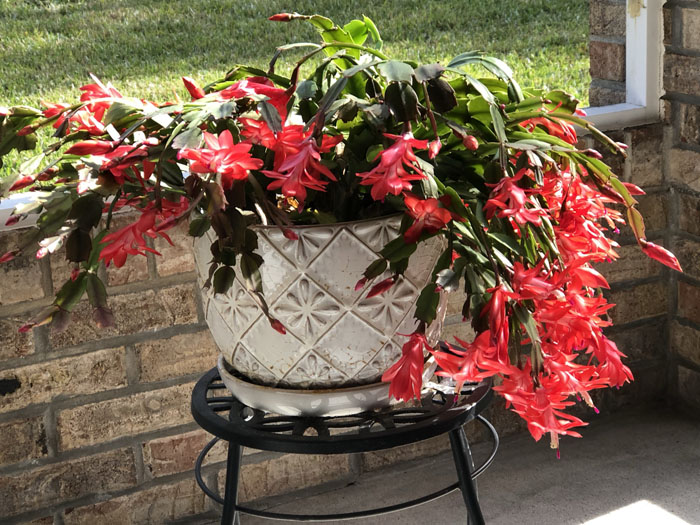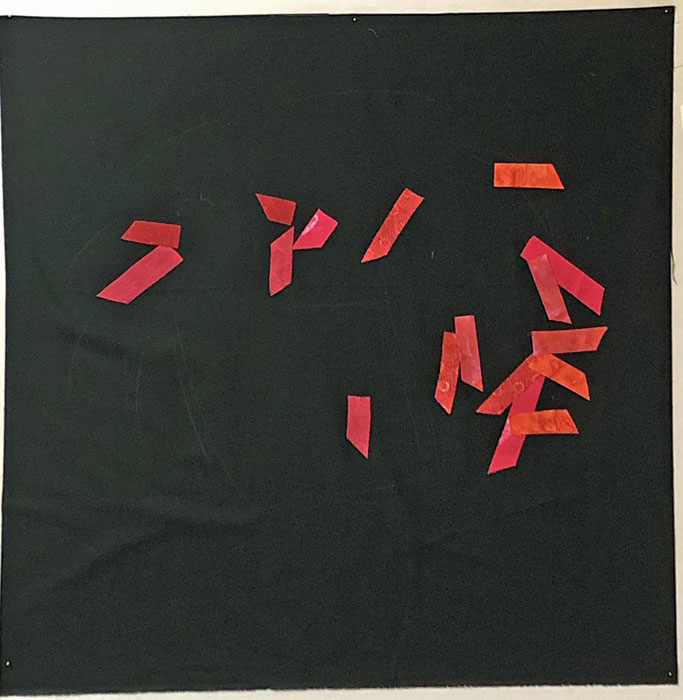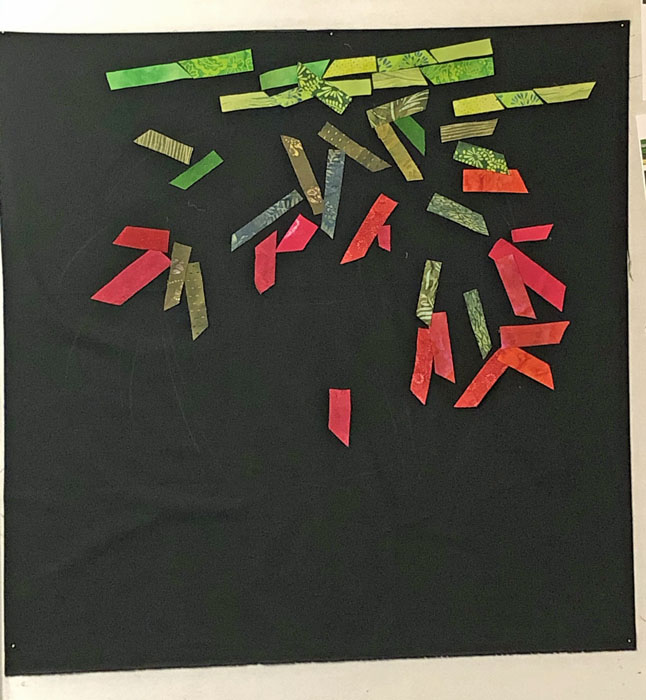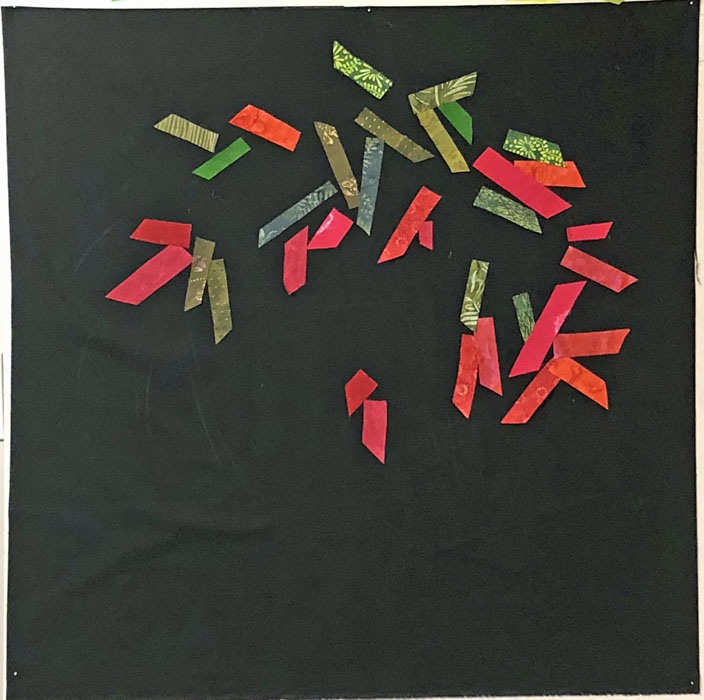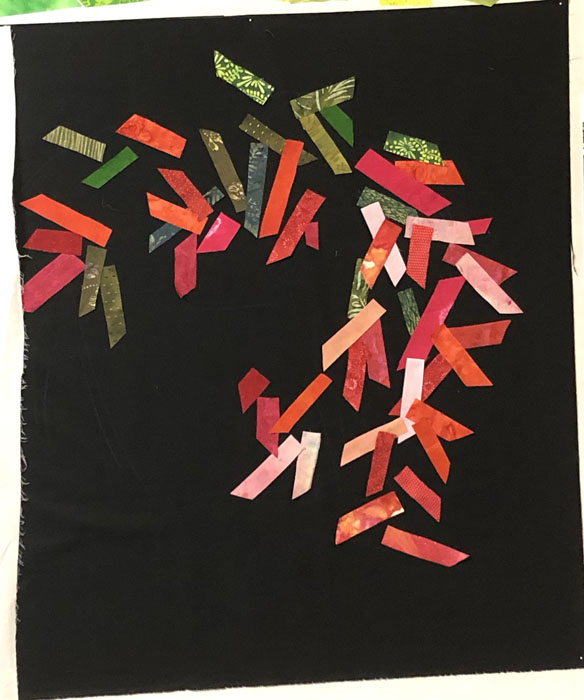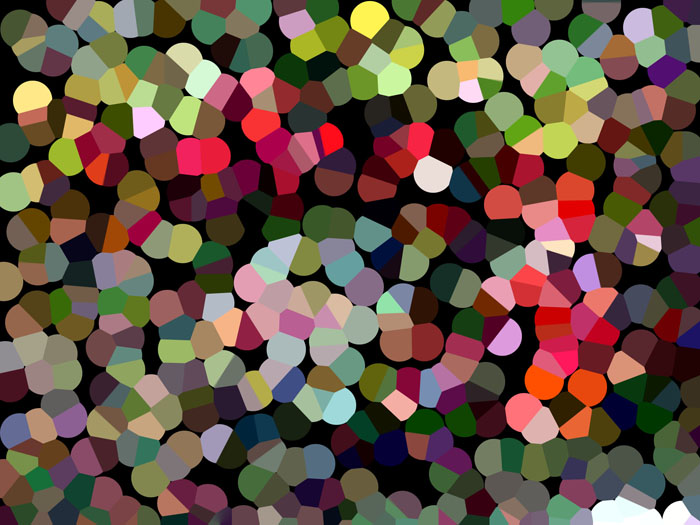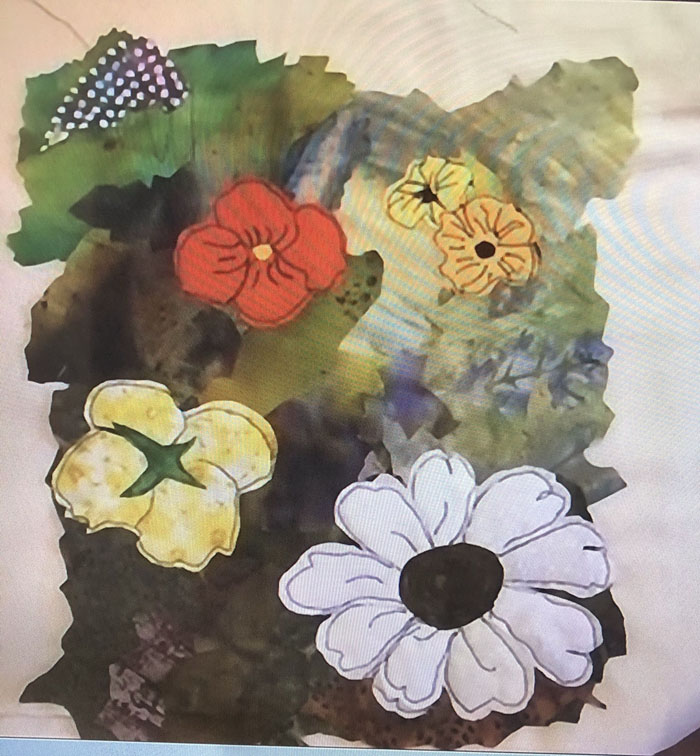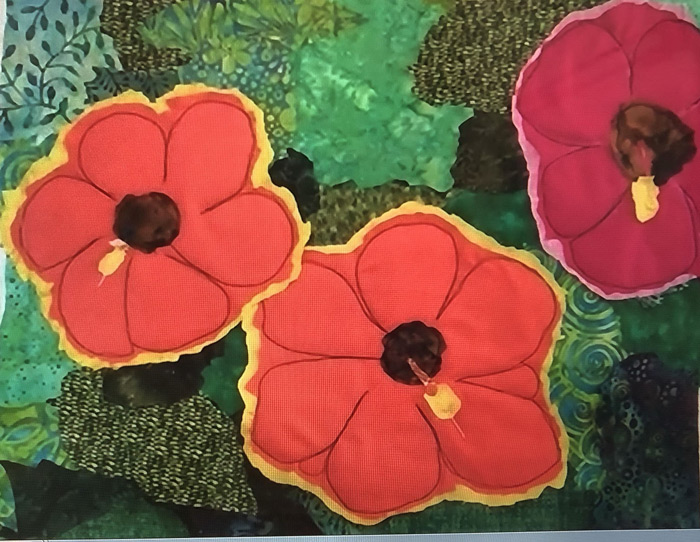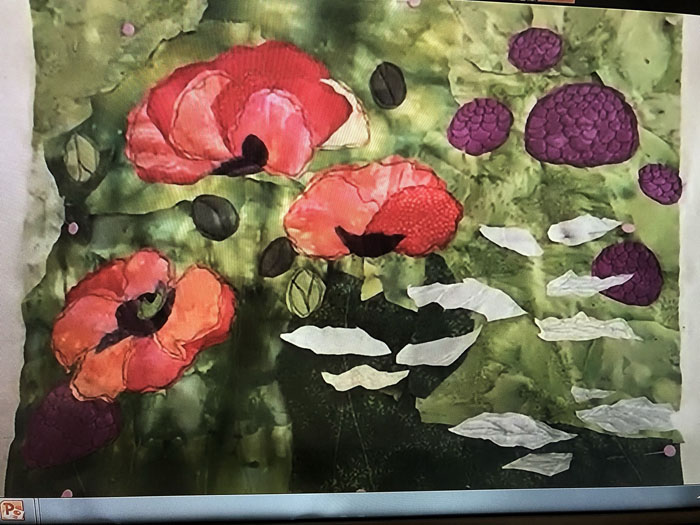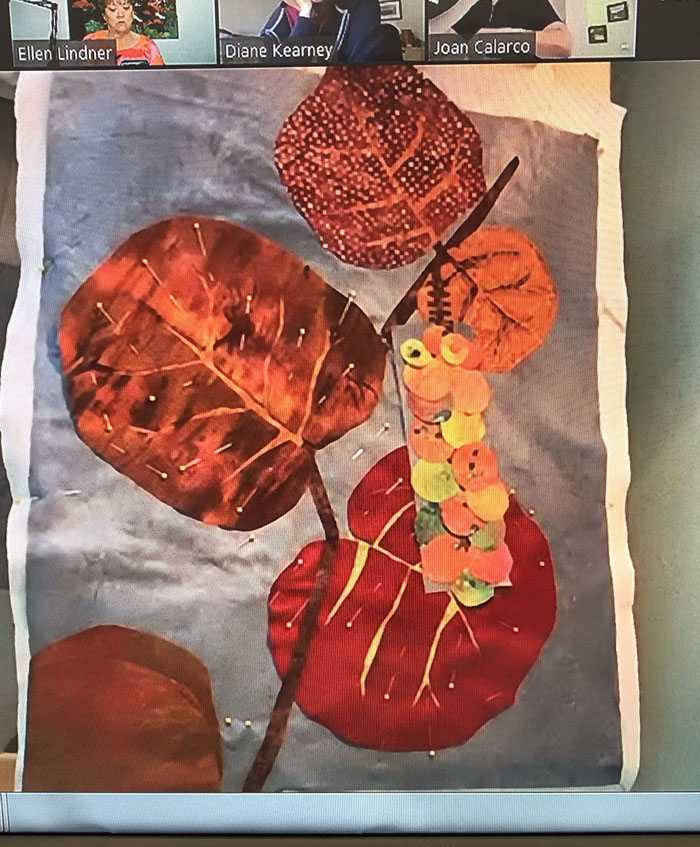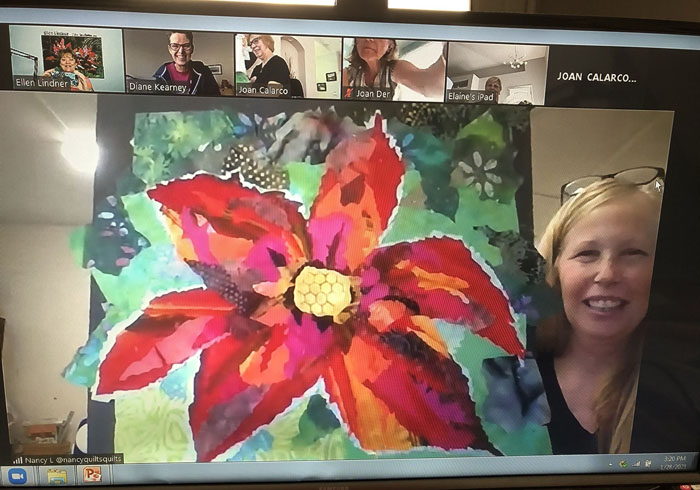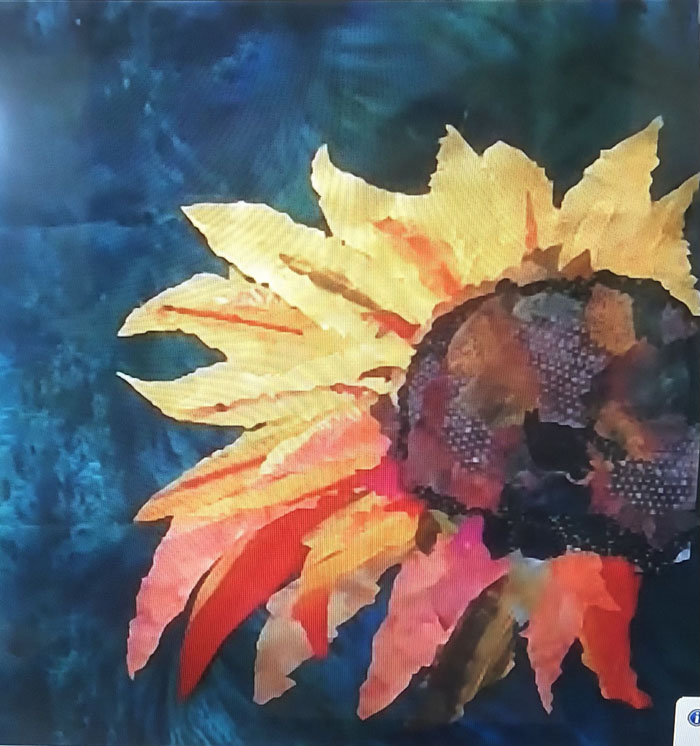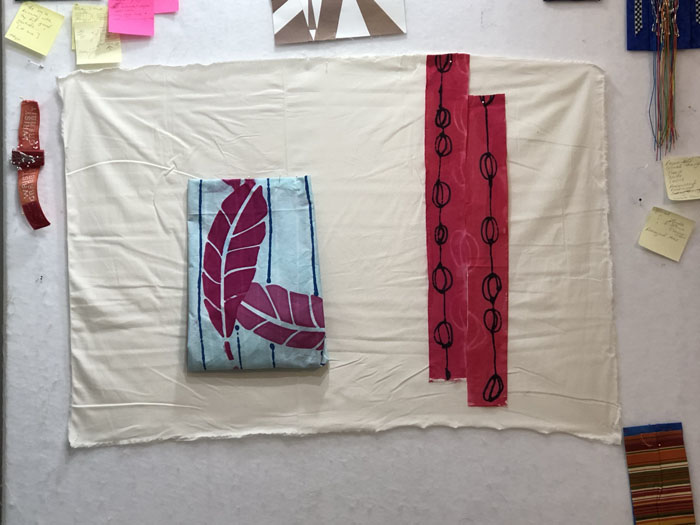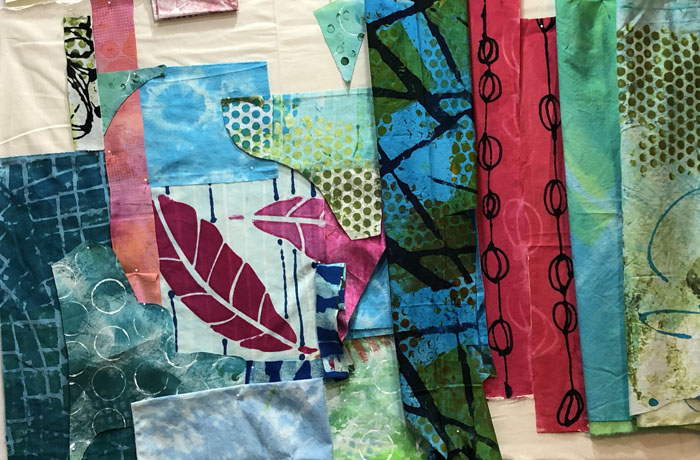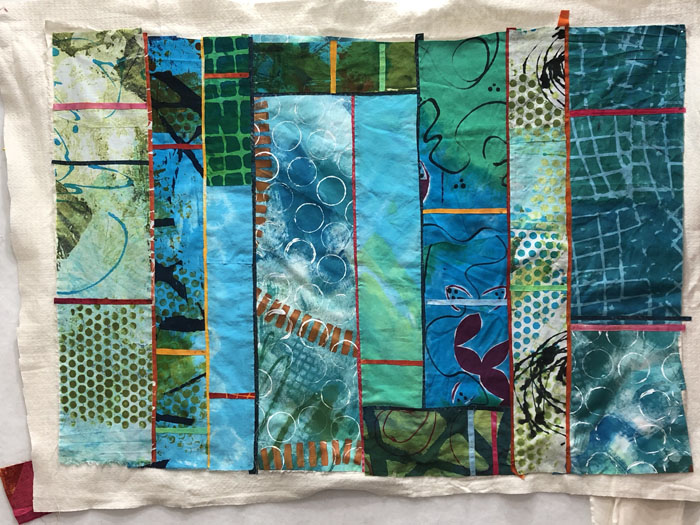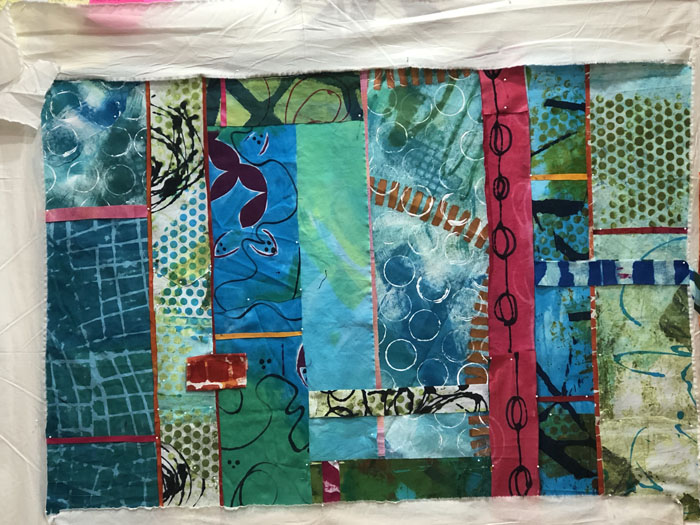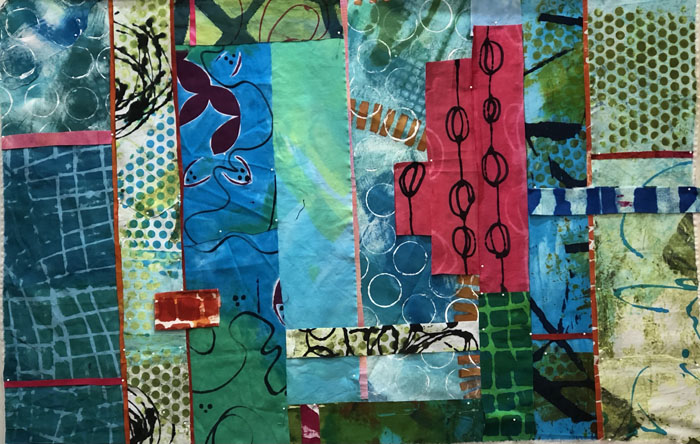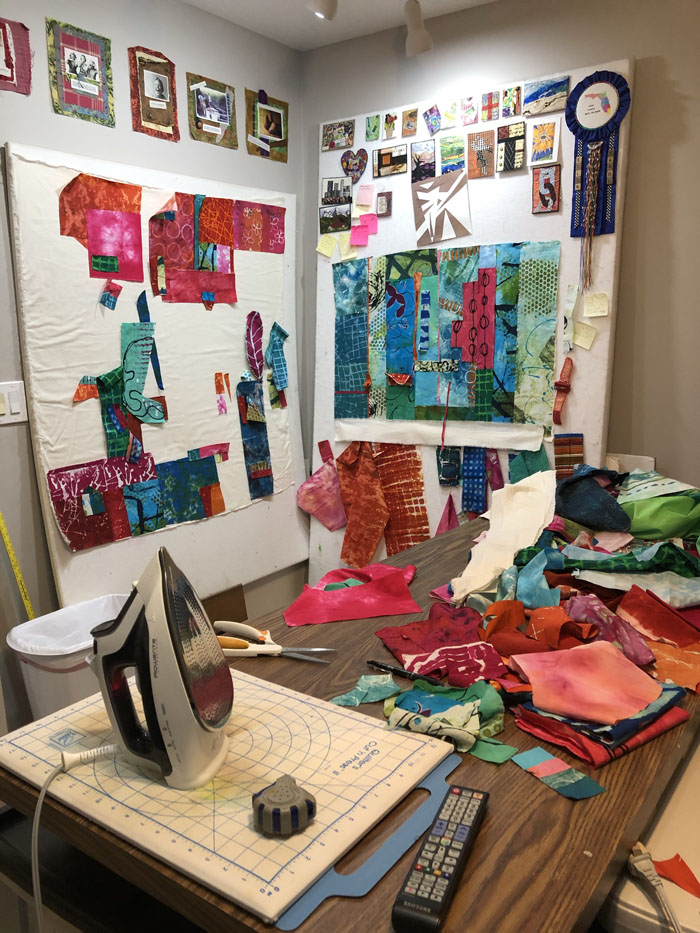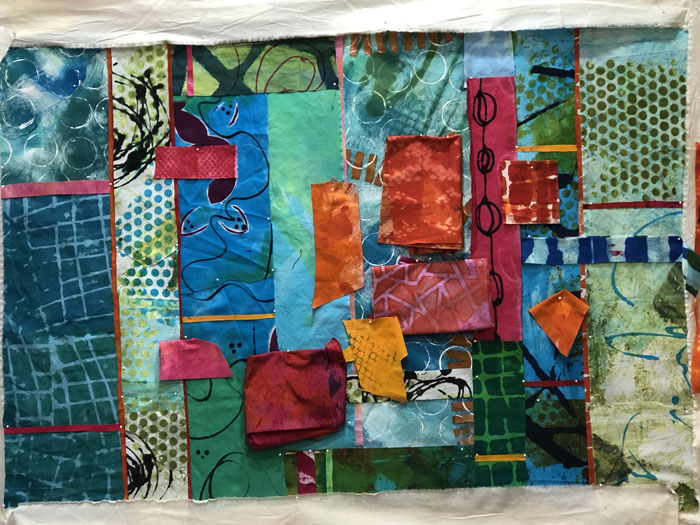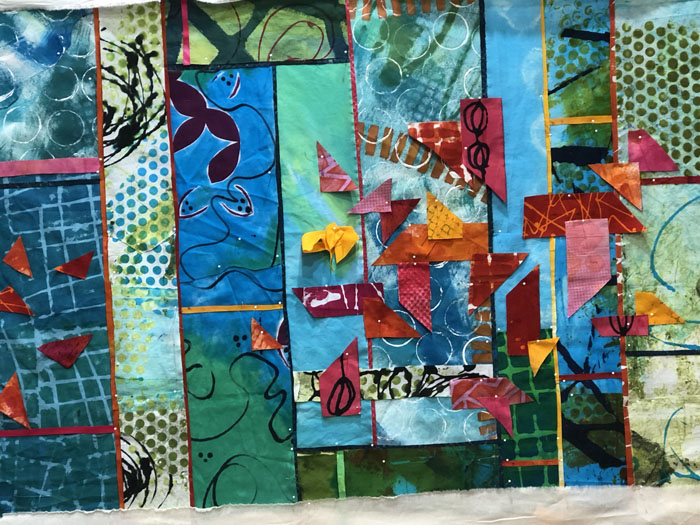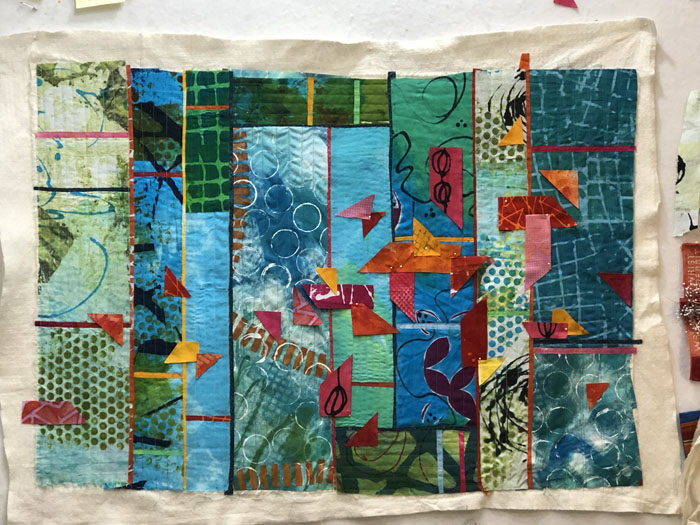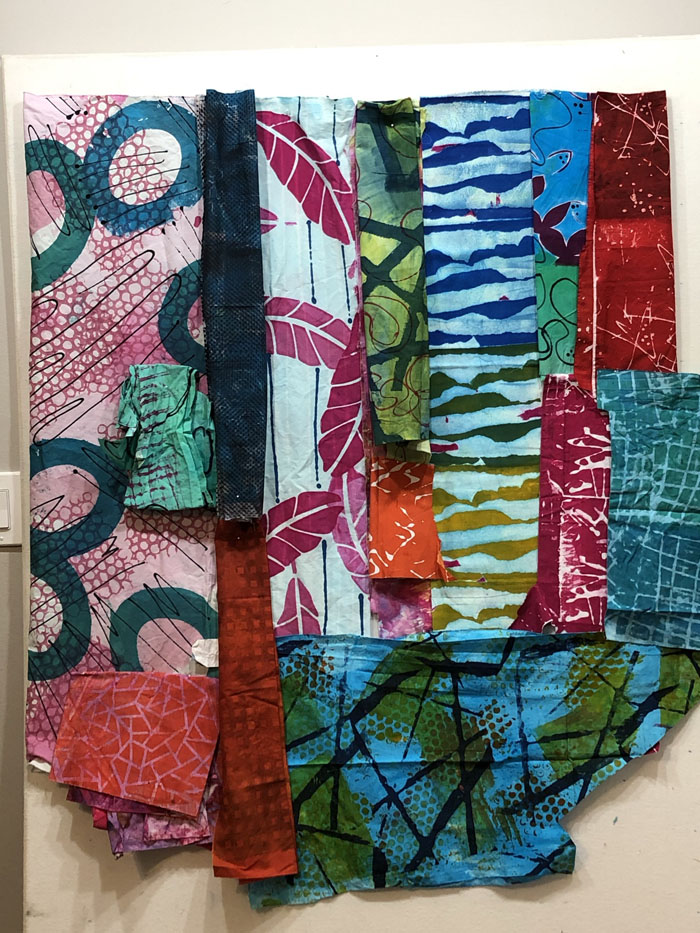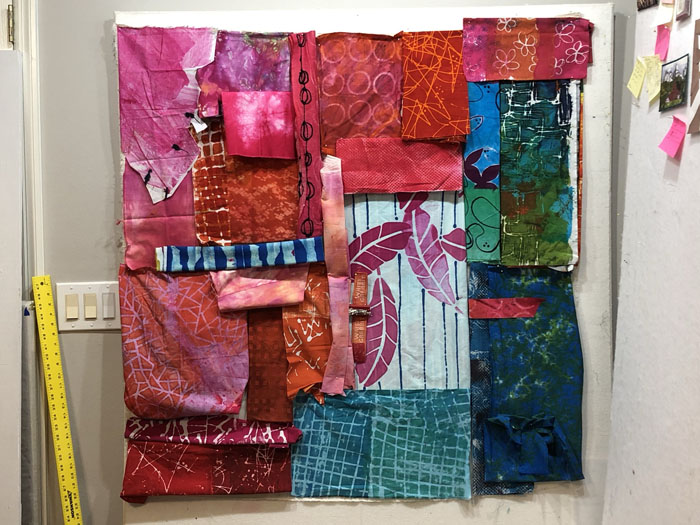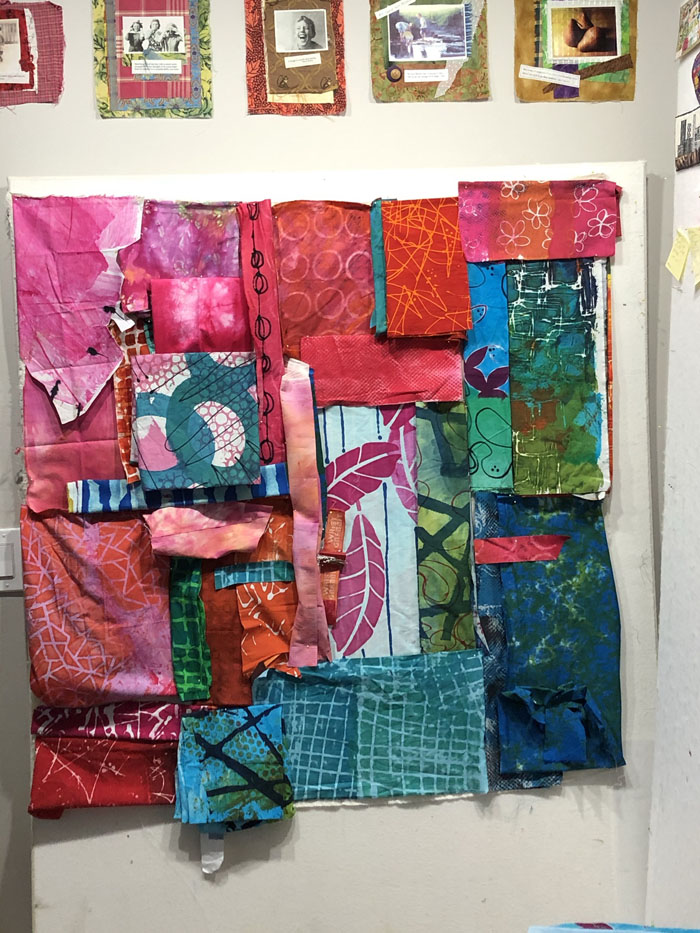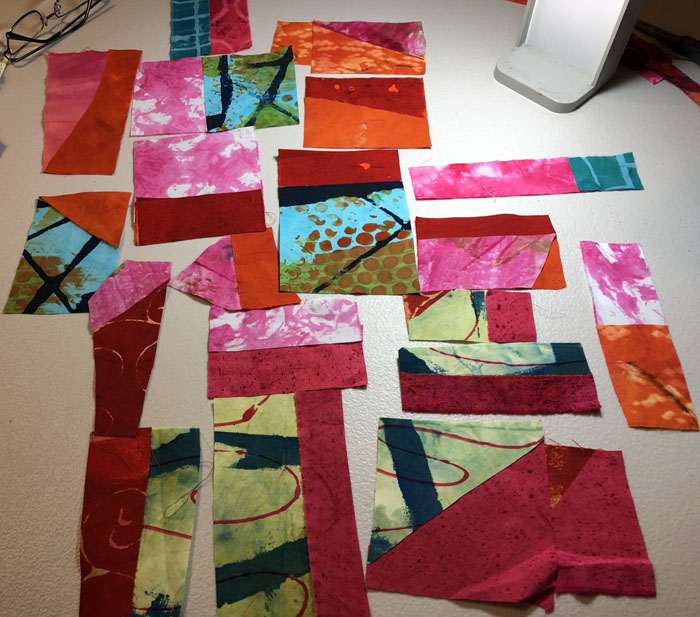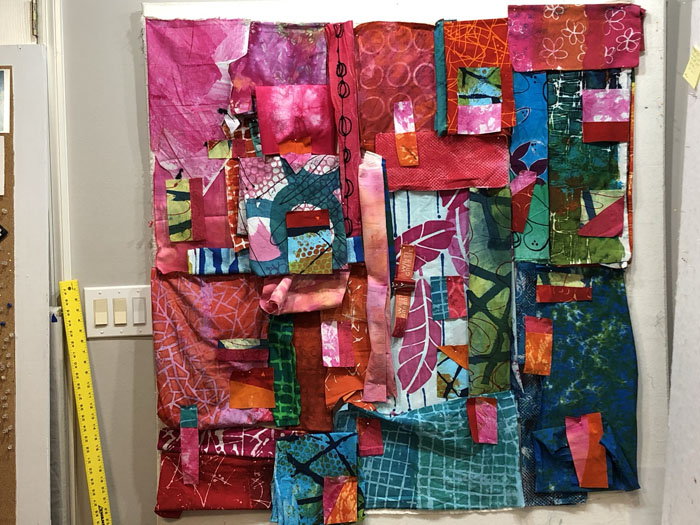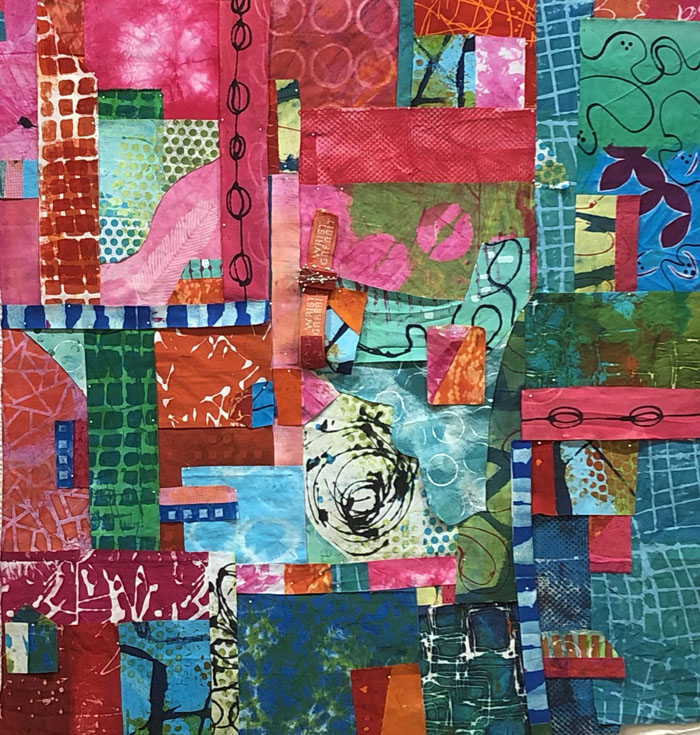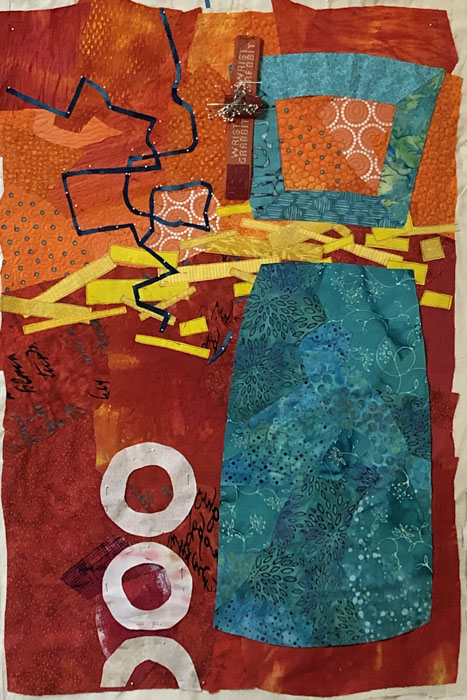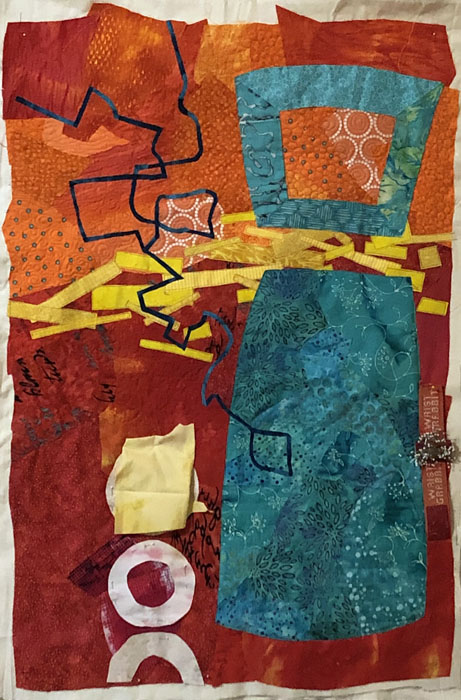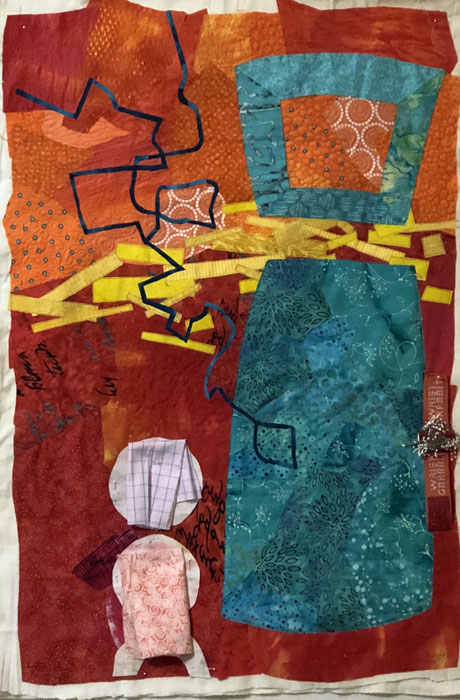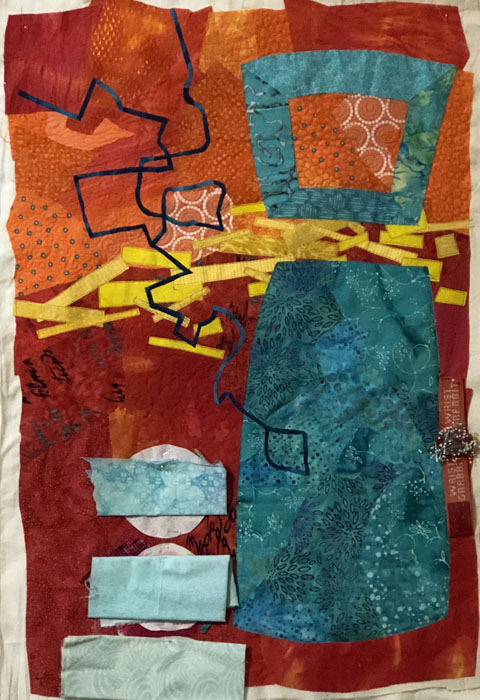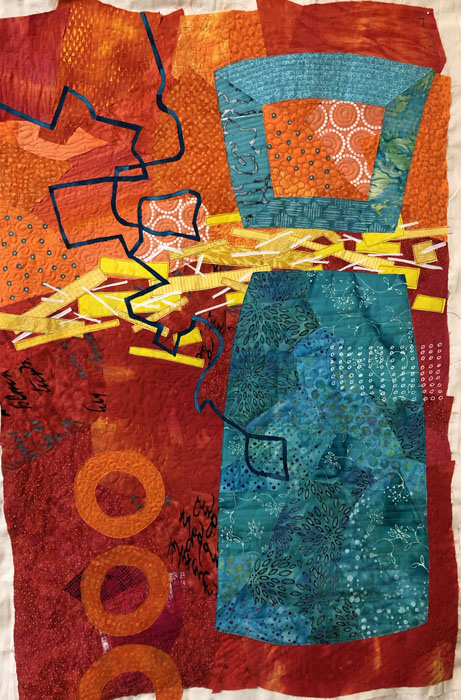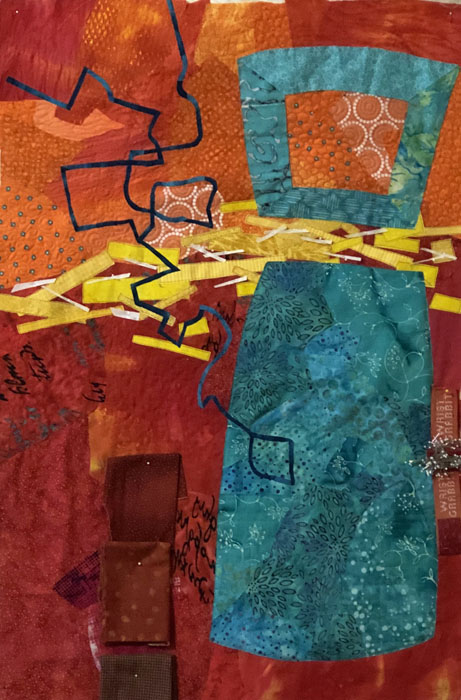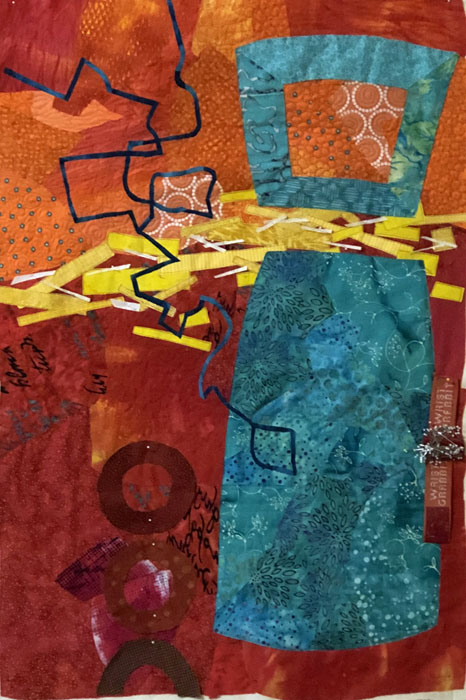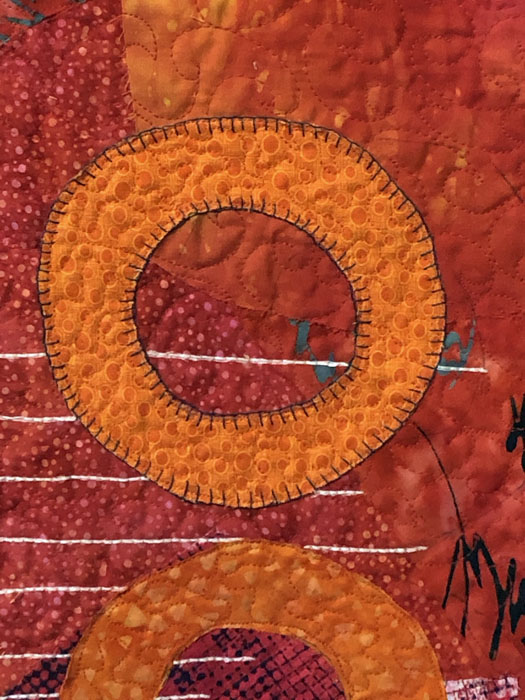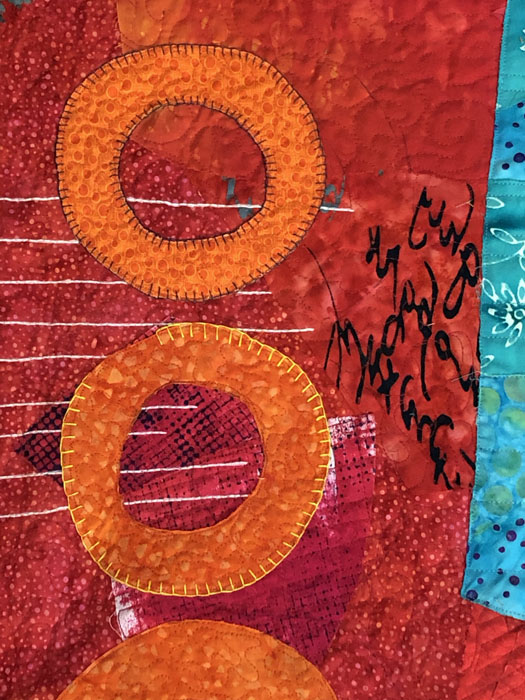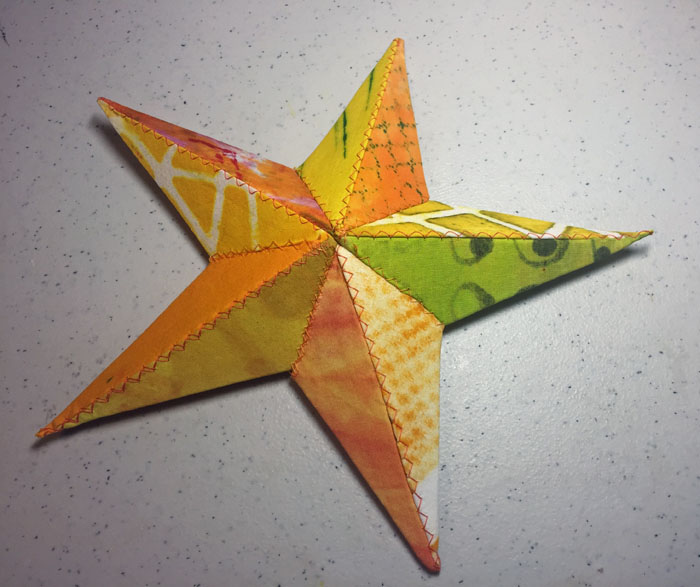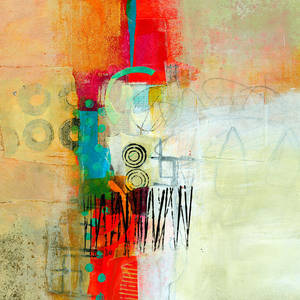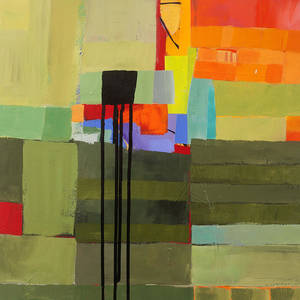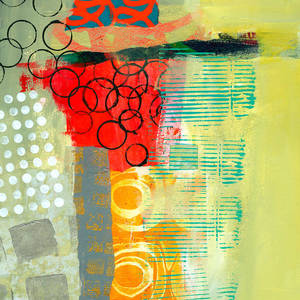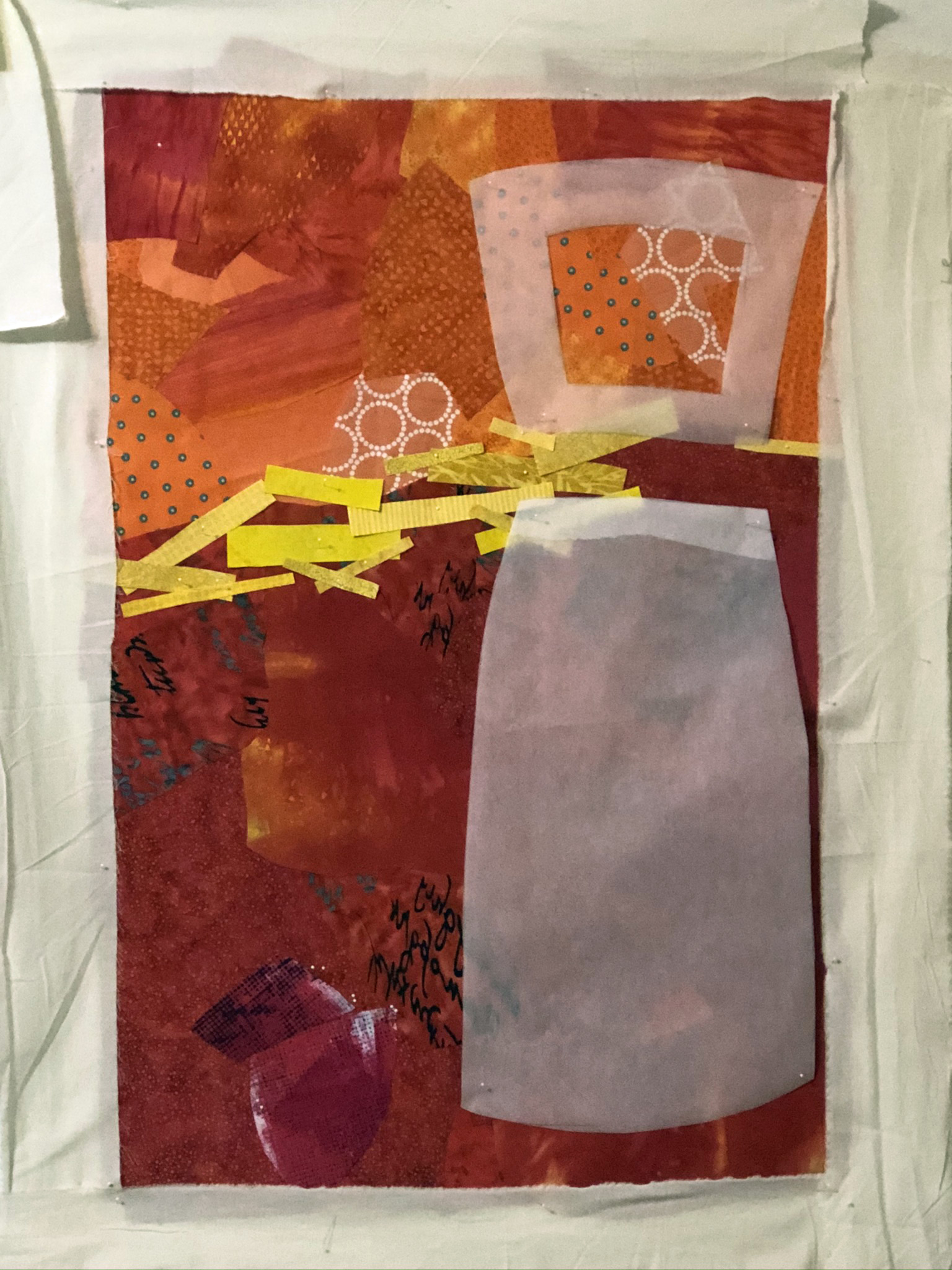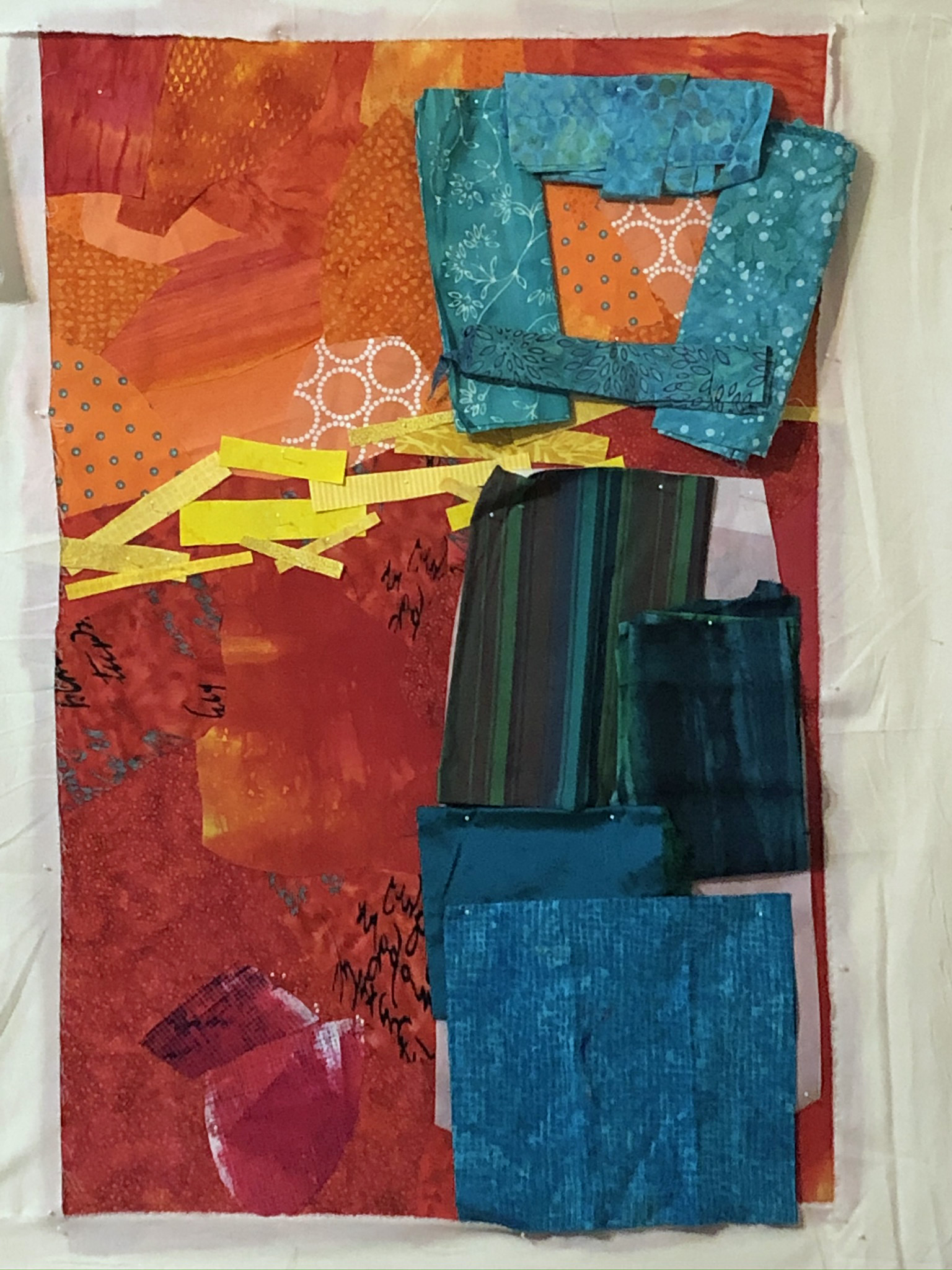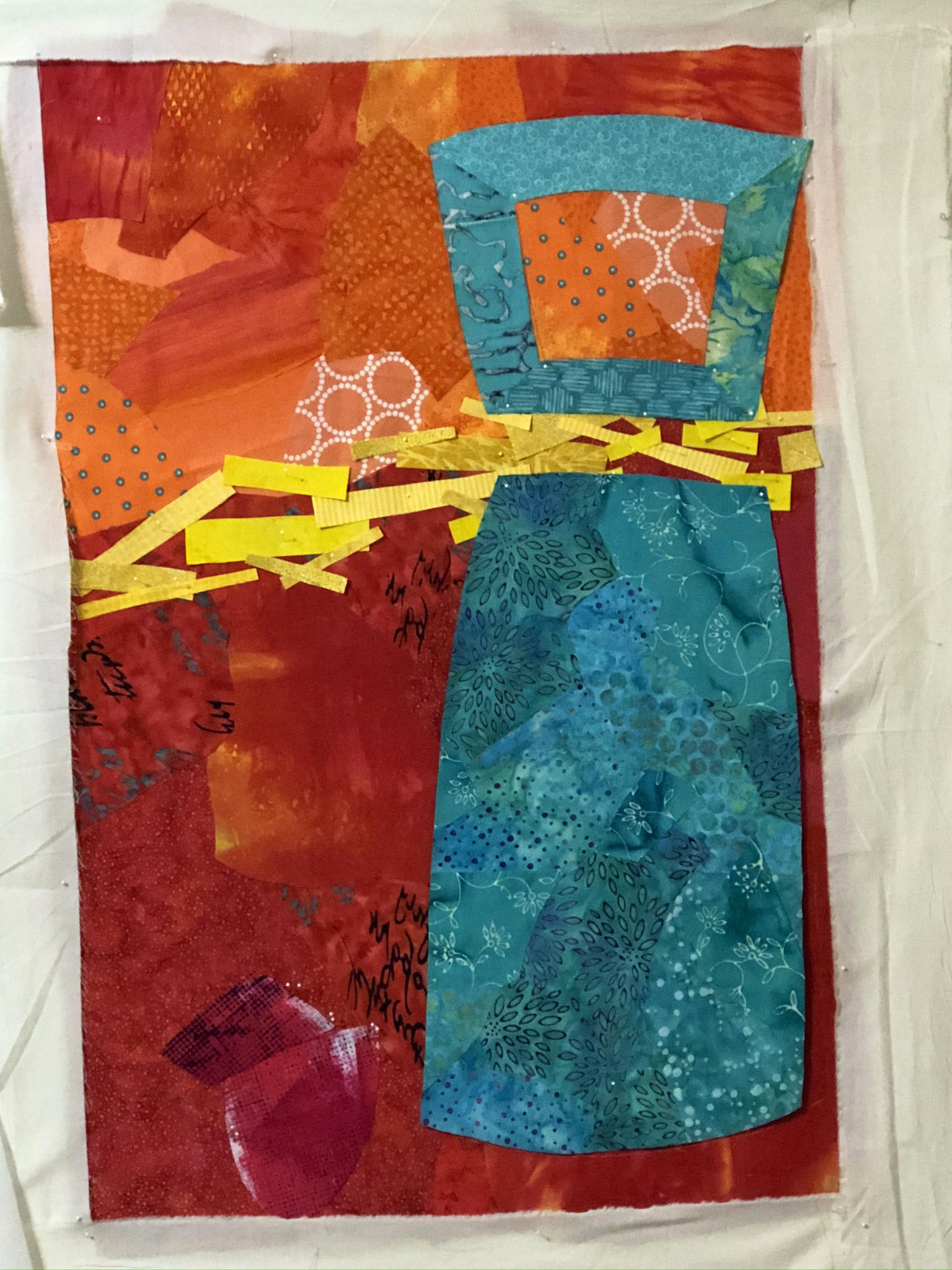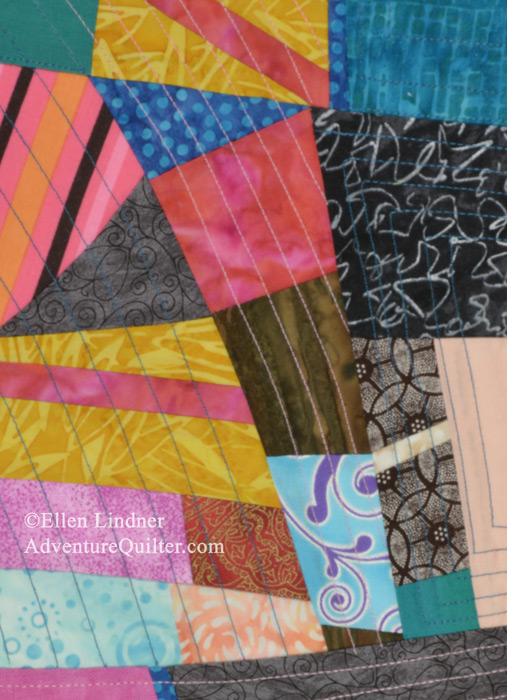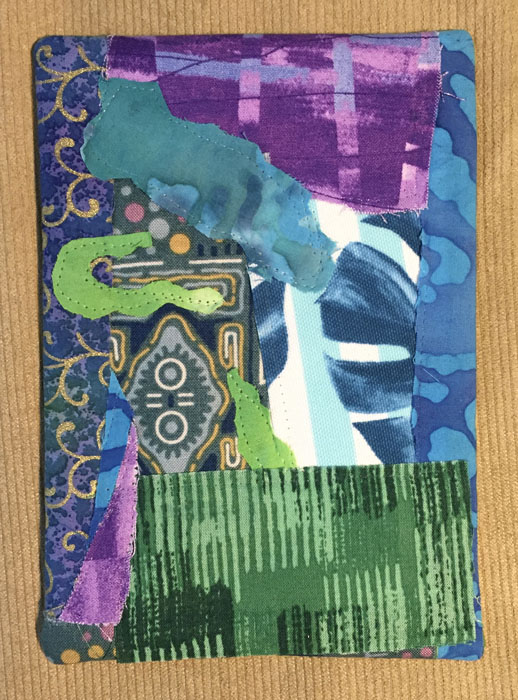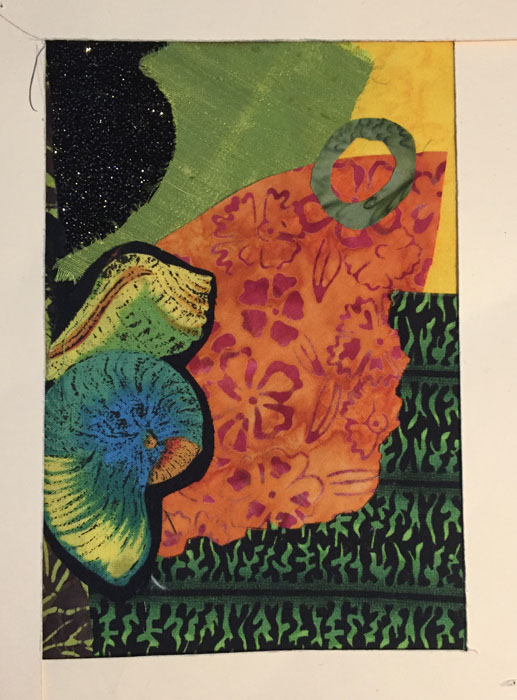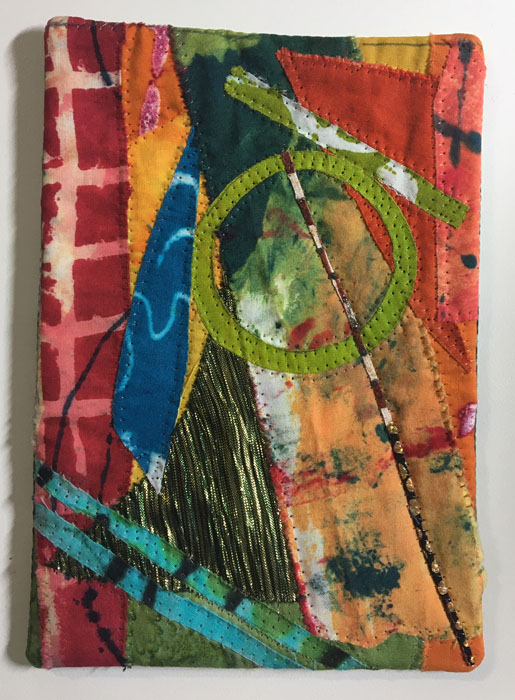It sure is great to be able to interact with students and teach, via Zoom, to people across the country. I recently taught “Floral Improv” to a group of students in the Ann Arbor, MI area. They all did an excellent job and these late-in-the-day screen shots are proof.
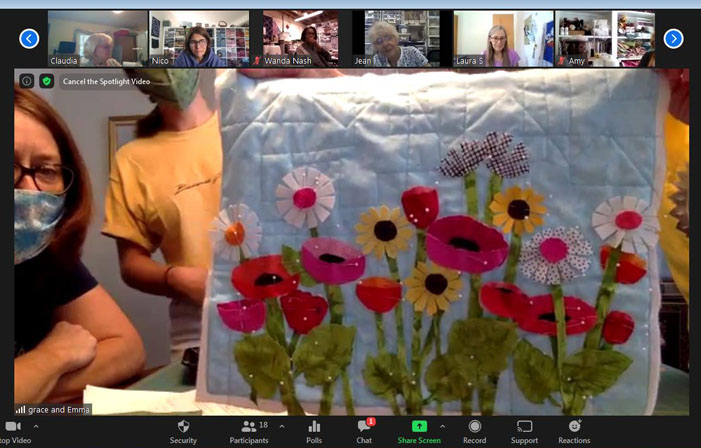
Woah, Grace got a LOT of flowers and foliage cut and placed, didn’t she? She’ll add black stitching to the flowers to add interest.
Working alongside her was her young friend, Emma. She’s only been sewing a few months, but she had no problems with a new technique.
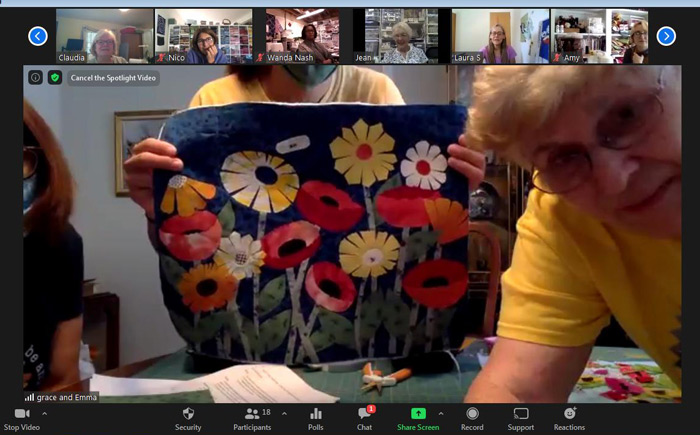
Claudia’s colors were actually much more vibrant that this, but this gives you an idea. (Claudia, I cropped you out because your eyes were closed.)
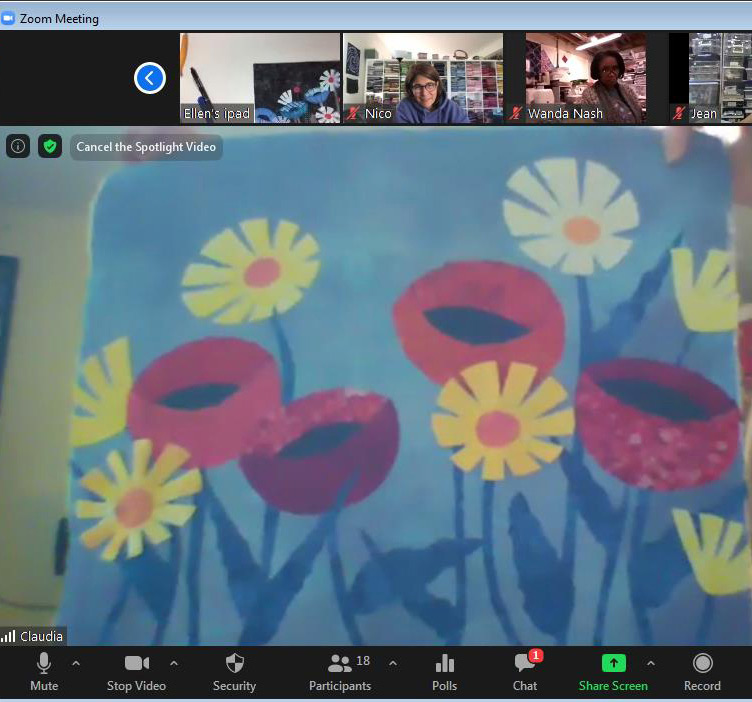
Laura settled on her flower colors pretty quickly, but was still auditioning foliage fabrics late in the day. (The down side of having access to ALL your fabric when taking a class at home?)
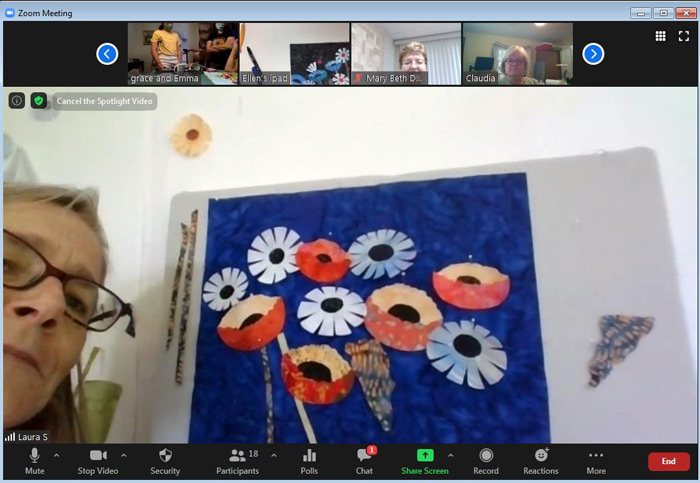
Mary wanted her flowers to be the stars so she opted for very low contrast foliage. Can you see that she’s added black stitching to some of her poppies, already?
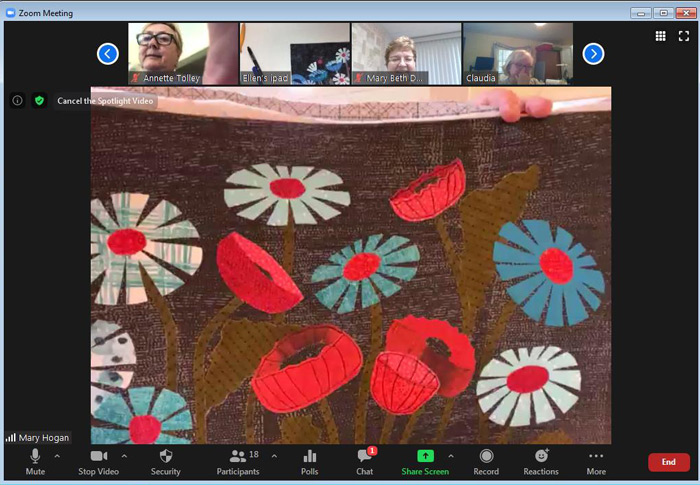
Lynne’s vibrant background fabric added another level of energy to her composition.
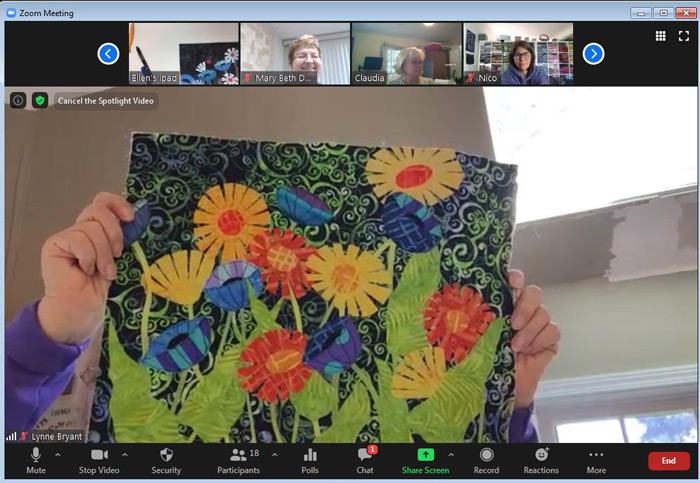
Showing me their work can be tricky, but Mary Beth had it figured out. She took a photograph with her phone and held it up to the web camera. Where there’s a will there’s a way!

Amy’s composition included a bird and a butterfly on her background fabric. They went well with her acid greens.
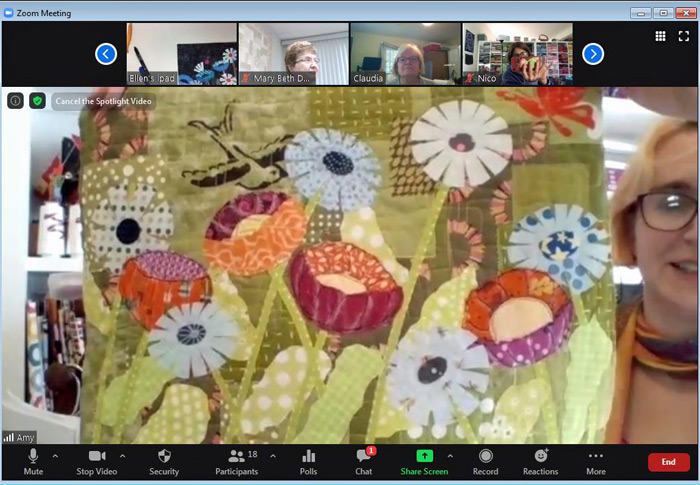
Jean is already outlining her palest flowers to add contrast. Can you see where she’s done it already? It really makes a difference.
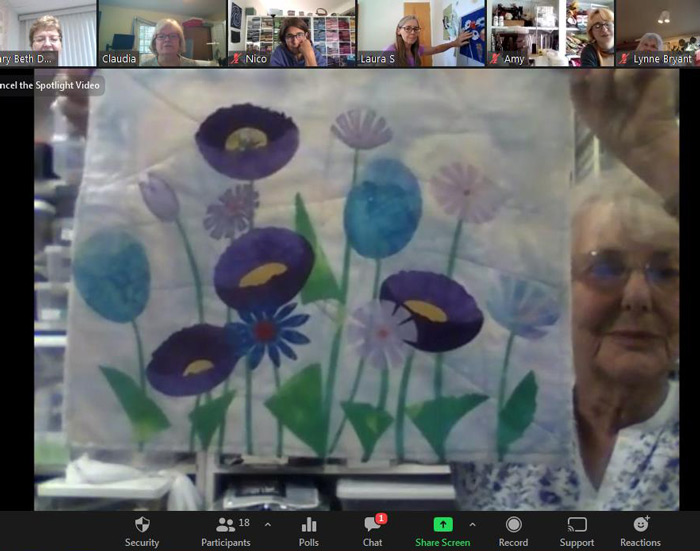
Don’t you love how Wanda brought in a few flowers arcing down from the top right?
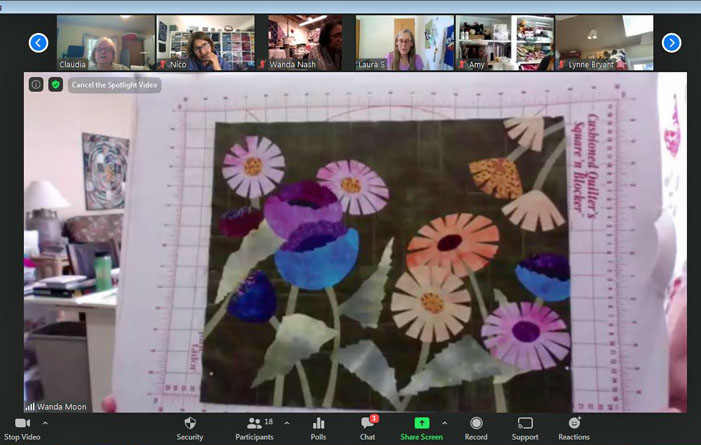
Nico got especially creative. She clustered her flowers and made a vase for them. A very nice option!
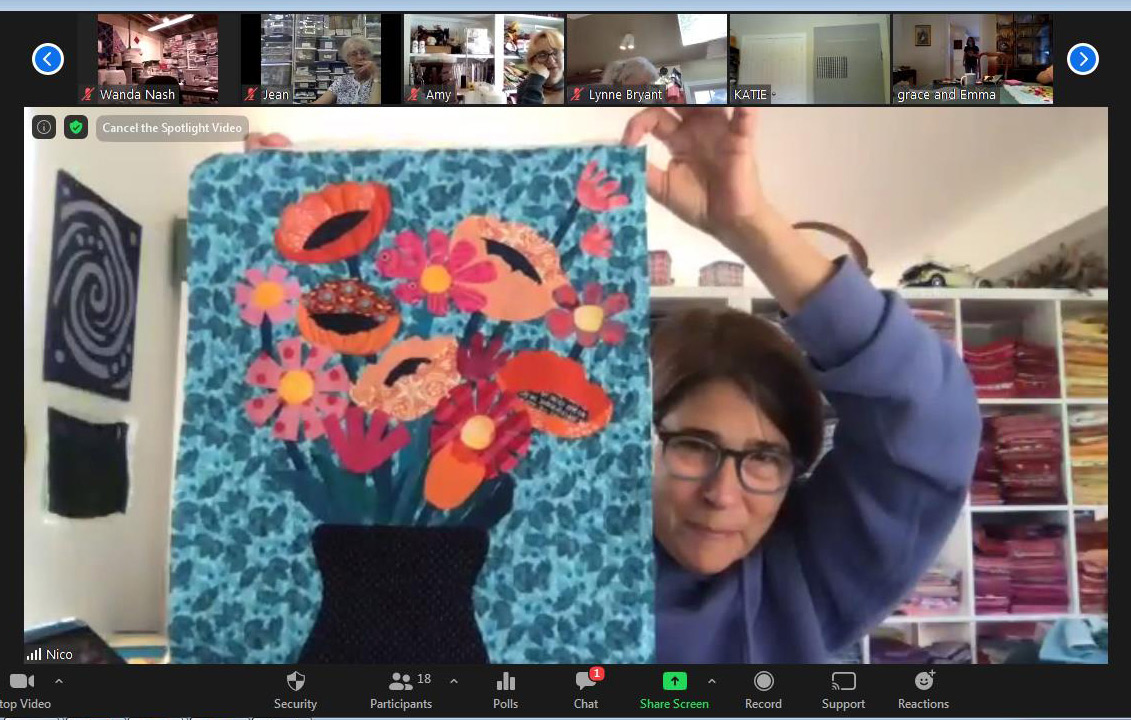
I had a fabulous day with these ladies and I think they’d say the same. It was SO wonderful to interact in this way after so many months of near isolation!
I strongly encourage your guild to get on the “Zoom wagon,” with me, or with some other teacher. It’s just way too much fun. If a workshop seems scary, start with just a lecture.
Information about my presentations.
Ellen Lindner
P.S. In this class students learn how to make two different types of flowers with no patterns. Then, they learn about composition and arrange their flowers. Leaves and stems are added last, and quilting begins. Students have already learned how to stitch their poppies with black thread in order to make them look more dimensional. Before you know it, it’s completely done.
